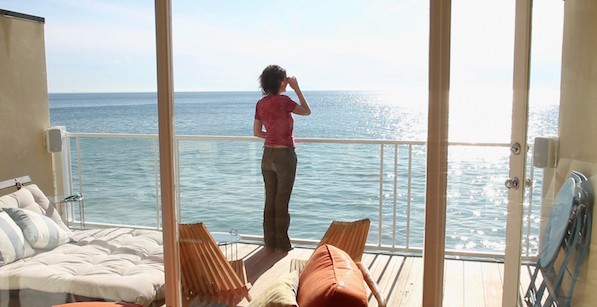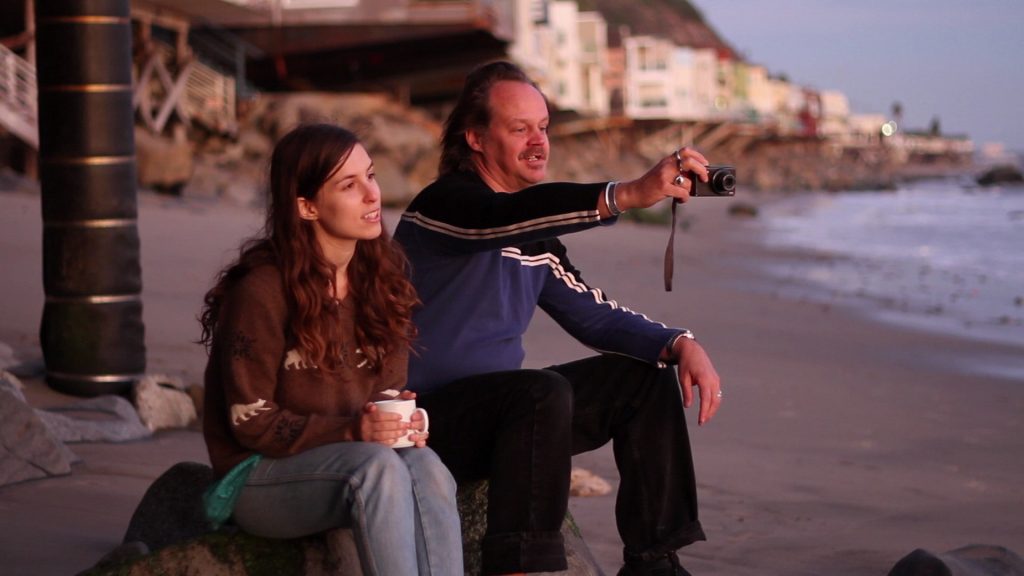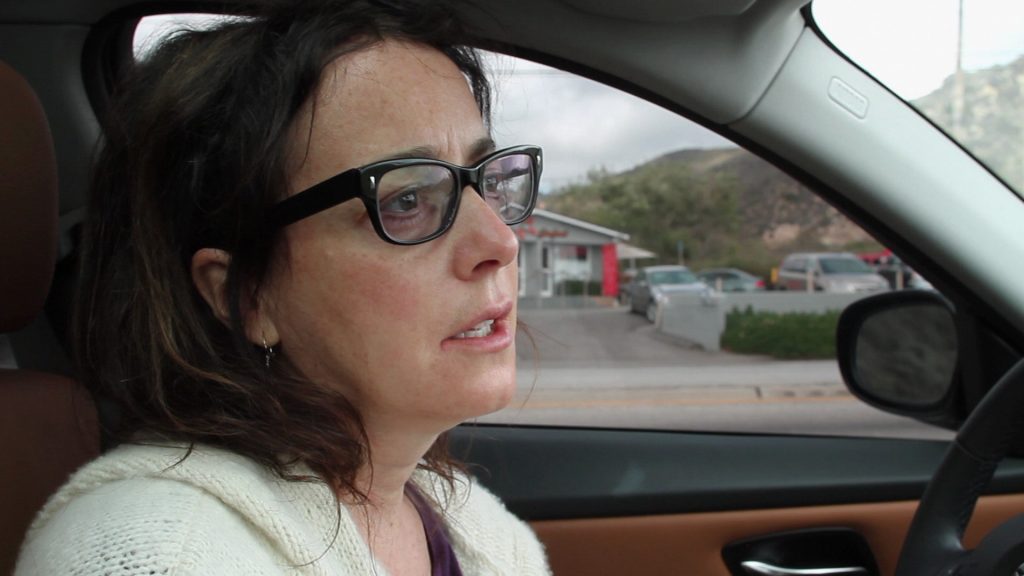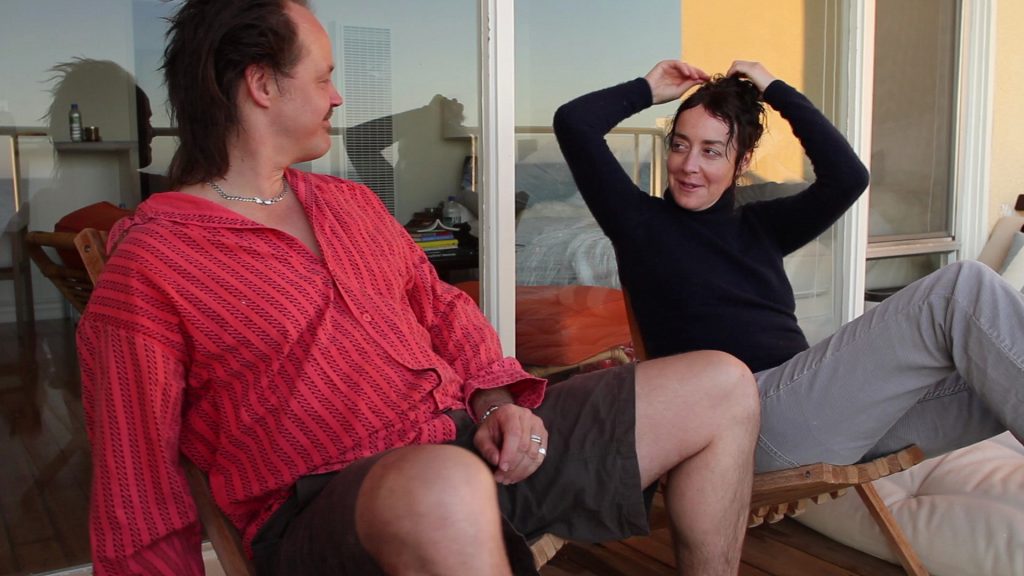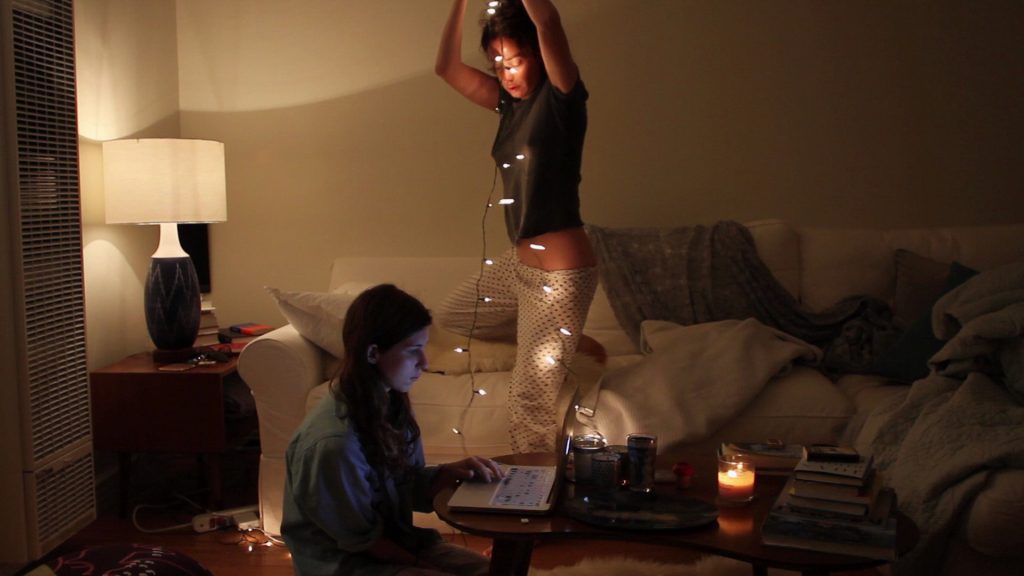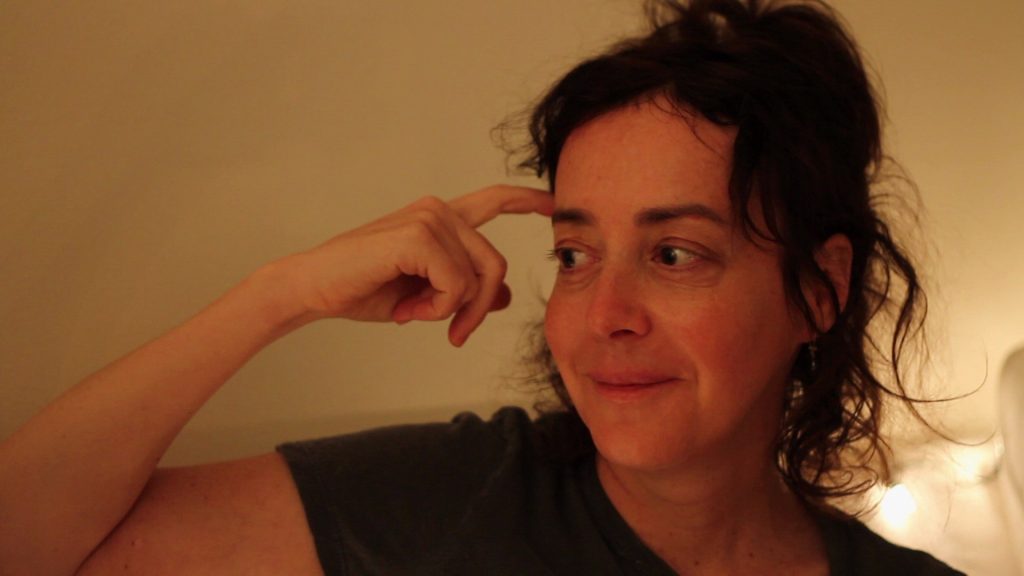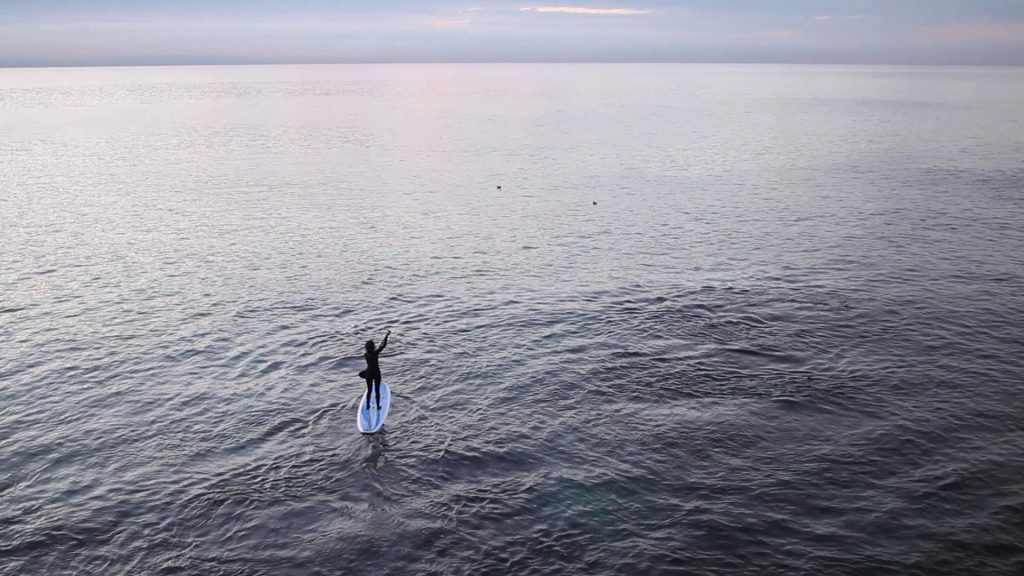Early on, Joe Swanberg’s films were better known for their attempts at capturing raw immediacy than beautiful cinematography. Rather than depicting natural landscapes, they usually stayed indoors. Very quickly, debate formed about whether his work was genuinely artless or a successful stab at getting real talk and emotions onto video. For Swanberg’s detractors, it didn’t help that his casts were white, his characters middle-class and not particularly concerned with making a living (or talking about politics), and his female characters frequently nude. All the Light in the Sky shows how far Swanberg has come from the (accidental or deliberate) primitivism of the films he made with Greta Gerwig.
Set in Malibu, it offers luscious vistas of the sea, taken in long shot and photographed by Swanberg himself. The sound design is a notable presence, filling many scenes with the cries of seagulls. The main character Marie’s (Jane Adams) apartment is carefully color-coordinated: it’s dominated by the beige shade of the soy milk she pours into a blender at one point. Although the setting is more or less urban, Marie loves paddleboarding and is shown in the water several times. Swanberg captures the uniquely appealing qualities of Los Angeles’ beachfront areas, even as her friend Rusty (Larry Fessenden) mourns their destruction via climate change’s tidal rise.
Marie is an actress whose career is starting to suffer from the fact that she’s forty-five, although a friend’s conversation brings up the distant possibility that society could look at a woman’s age as a strength. Her niece Faye, an aspiring actress (Sophia Takal), lives with her for a period. Marie views Faye as an alter ego of sorts; Faye is entering the business that’s now treating Marie fairly cruelly from a position of relative power, as she still has youth to rely on. Marie brings these subjects up frankly in conversation with Faye. The younger actress ponders whether she’d quit the business if she got pregnant and devote all her time to raising children. Meanwhile, Marie researches solar panels (in scenes with real-life environmentalist David Siskind) and ponders turning her friendship with Rusty into something more serious.
Early Swanberg films were widely criticized because the characters talked about “nothing.” As if in response, All the Light in the Sky isn’t afraid to bring up big ideas. Marie suffers from insomnia; in place of bedroom reading, she listens to on-line lectures about the way psychoanalysis has replaced religion in the West. This idea isn’t really developed in the film, just thrown out by Swanberg—none of the characters are in analysis. However, the film is seriously concerned with ecological matters. It points out the fragility of the beauty it shows. Just as Faye’s youth gives her a power that will eventually fade, the California coast is bound to suffer the effects of pollution and over-consumption of fossil fuels. Near the end of All the Light in the Sky, David tells all this to Marie. Without getting on-the-nose, the film also shows how many people are on-line 24/7, from Marie’s falling asleep to the sound of her computer to the constant presence of cell phones (including a brief scene shot on one.)
More than most filmmakers of his generation, Swanberg’s libido is reflected in his films. He’s been accused of staging them as excuses to get his actresses naked: peep shows with plausible deniability, essentially. Adams is nude in the first scene of All the Light in the Sky, as she struggles to get into her wetsuit in preparation for paddleboarding, and Takal is shown nude as well. However, it’s worth noting that the film passes up several opportunities for gratuitous T&A. When Marie takes a shower, the audience only sees her face. During a Skype conversation with her boyfriend, Faye shows him her breasts, but the audience doesn’t see them. If Swanberg still unabashedly showcases female nudity, he’s doing so with a lot more control than he used to, and his depictions of Adams’ nude body offer a rare look at a middle-aged woman in the film industry who doesn’t seem to have gone under the knife.
The script for All the Light in the Sky is credited to Adams and Swanberg. It’s hard to tell whether there actually was a written script, as Swanberg’s films used to be fully improvised. The conversations here have an ebb and flow that feels genuine. This allows for dead space at times, but also emotional epiphanies that threaten to become dangerously awkward but never quite get there. The discussion between Marie and Faye about aging is one of these moments. The later conversations between Marie and Rusty match them, as the duo’s growing intimacy is marred by her insistence that he constantly impersonate Jack Nicholson. Whether written or improvised, they feel raw.
All the Light in the Sky feels very much like a product of the past few years The original mumblecorps—Swanberg, the Duplass brothers, Andrew Bujalski, Aaron Katz—has gone off in very different directions over the past decade. If Bujalski’s Computer Chess goes retro in an attempt to find the roots of present-day techno-malaise, I can’t imagine Swanberg ever utilizing a video camera from 1980 or even directing a period piece. All the same, All the Light in the Sky fits into a tradition of films about troubled actresses, from Billy Wilder’s Sunset Boulevard to David Lynch’s Mulholland Dr. Perhaps Adams’ influence—and the perception on her part that it could be perceived as autobiographical—keeps it from the despair that it engulfs those films. Its closest peer might be Robert Greene’s documentary Actress, which observes a middle-aged woman who gave up acting to raise a family—the road contemplated by Faye—and now struggles to get back to her craft. The improvisatory elements and the sense that Adams might be playing some version of herself bring All the Light in the Sky close to documentary, just as Greene’s film flirts with fiction. This is Swanberg’s best film, achieving a level of ambition and style new to his work.

